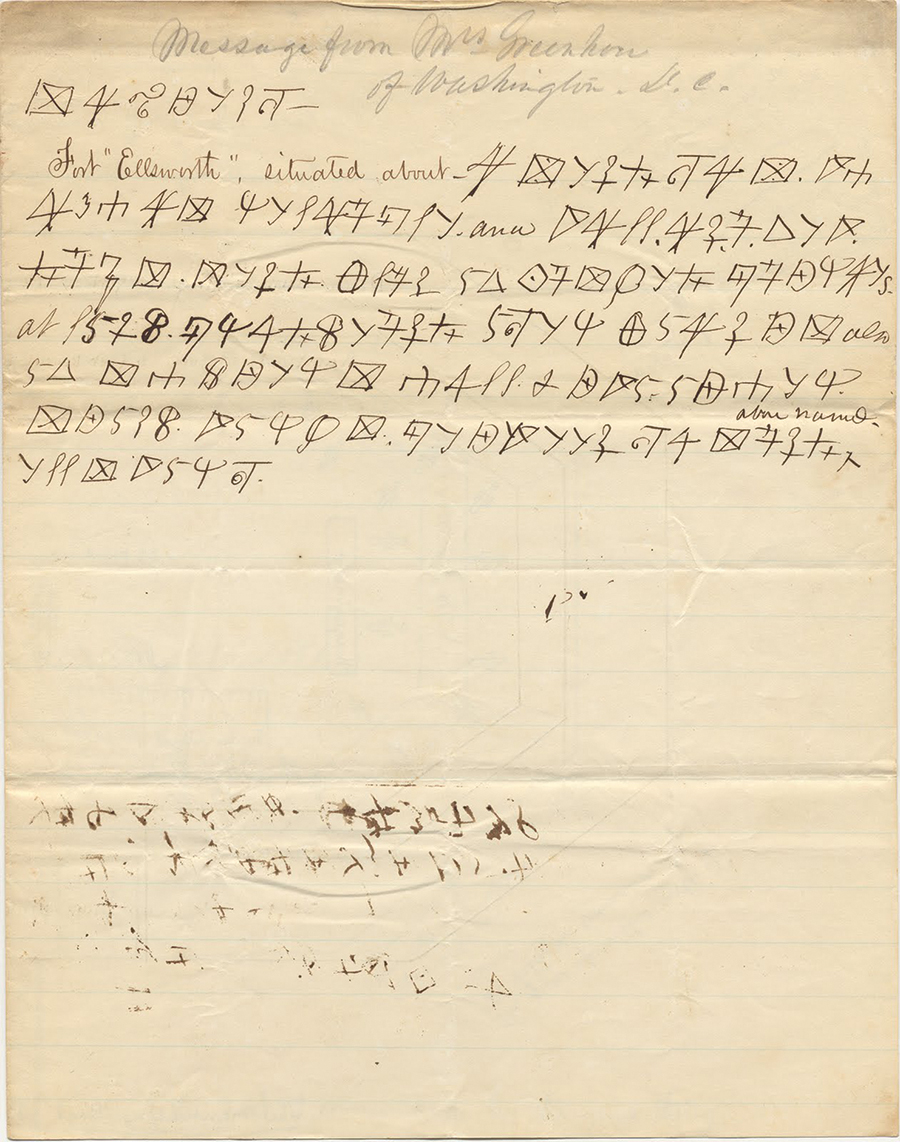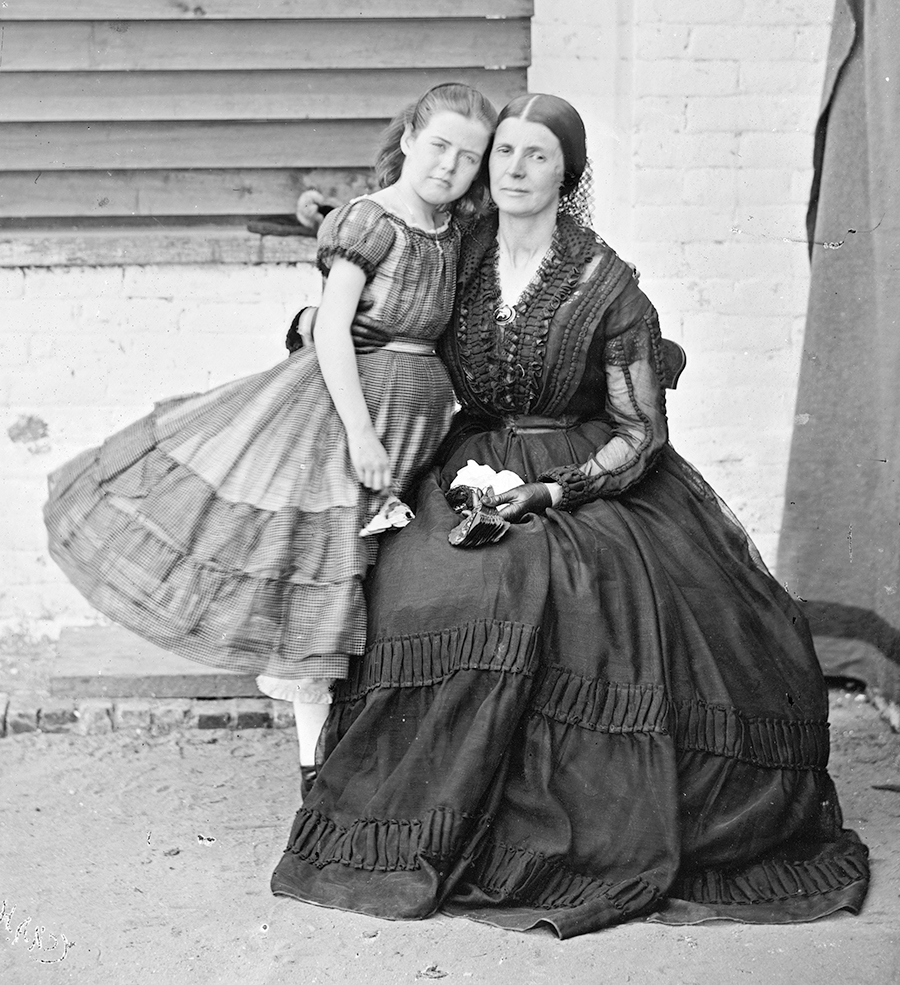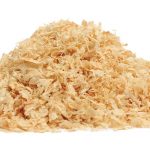A Confederate spy and collector of confidences, Rose Greenhow remains a mysterious figure in the history of the Civil War
By Kevin Maurer
The Condor, a slick side-paddle steamer built to run the Union blockade, was perched on a sandbar in the predawn darkness as cold Atlantic waves pounded against her hull.
A few minutes before, the ship was being pursued by a Union gunboat while making a run at the mouth of the Cape Fear River. The Condor’s British captain hoped to slice through the channel and into the protection of Fort Fisher. But the pilot, spooked by another marooned blockade runner, missed the channel and beached the blockade runner on a sandbar.
On deck, former spy turned diplomat Rose Greenhow was rattled. Having spent years in Europe trying to drum up support for the Confederacy, she was returning home. But now her return was in jeopardy. Nearby, a Union gunboat prowled just out of range of the fort’s guns, waiting to pounce if the Condor floated free. The prospect of being captured by the Union and imprisoned again consumed her. The shore was only 500 yards away. Greenhow had to get off the Condor.
She found Capt. William Nathan Wrighte Hewett, a 30-year-old furloughed British Naval officer working for half pay while he waited for his next command, and demanded his sailors row her ashore. Hewett refused. He knew when the tide rose, the Condor would float free. In the meantime, Fort Fisher’s guns protected the ship.
But Greenhow wouldn’t accept no for an answer. Her pleas were joined by the other passengers — Lt. Joseph D. Wilson from the commerce raider CSS Alabama, and James Holcombe, Confederate commissioner to Canada. What they said or did to change Hewett’s mind is lost to history, or maybe he just wanted the hysterical passengers off his boat. He ordered his men to lower a lifeboat on the leeward side of the beached steamer and row Greenhow and the others to shore.
Greenhow, who wore a black silk dress and coat, slid a leather pouch around her neck containing dispatches from Confederate representatives in Europe and 400 British sovereigns — gold coins worth $2,000 that weighed about six pounds. She had earned the money from the sale of her memoir in England and planned to donate the money to the Confederate cause.
The boat was lowered into the dark ocean. As the hull hit the water, a wave broadsided the dinghy, flipping it over. The sailors, Holcombe and Wilson quickly scampered onto the back of the capsized boat, but there was no sign of Greenhow.
She was lost in the black waves.
The legend of Rose Greenhow has been retold in books — one written by her own hand – and in movies and TV shows. Her persona has captivated imaginations, but the reality is Greenhow’s legacy is as murky as the Atlantic waves that snuffed out her life. Praised as a firebrand who fought passionately for what she believed, what she believed in was slavery and the breaking of the United States. Her cause was less than noble then and now.
“Rose was on the wrong side of that struggle,” Ann Blackman writes in Wild Rose: Rose O’Neale Greenhow, Civil War Spy. “Yet even those of us who could never accept her politics cannot help but be amazed at her resilience and zeal.”

A Born Rebel
Born in 1813 on a plantation in Maryland, Rose O’Neale had four sisters. Her father, John O’Neale, was a planter and slaveowner who was murdered in 1817 by his black valet. Her widowed mother sent Greenhow to Washington, D.C., to live with an aunt who ran a boardinghouse at the Old Capitol Building.
In Washington, Rose caught the eye of Robert Greenhow Jr., a doctor from Virginia. They married in 1835. By then, Dr. Robert Greenhow worked as a diplomat. His work took him to Mexico and San Francisco. Rose Greenhow left San Francisco in 1852 and gave birth to Little Rose — the last of four daughters — in 1853. A year later, her husband died after a fall in San Francisco.
Greenhow’s sympathy for “preserving the Southern way of life,” including slavery, was born after her husband’s death. Growing up in a slaveholding family, her passions for secessionist views were stoked by U.S. Senator John C. Calhoun from South Carolina, whom Blackman said Greenhow considered a father figure.
“I am a Southern woman,” Greenhow wrote, “born with revolutionary blood in my veins, and my first crude ideas on State and Federal matters received consistency and shape from the best and wisest man of this century.”
With the nation on the brink of war, Thomas Jordan, an Army captain stationed in Washington, recruited her into a Southern spy network. He provided Greenhow with a cipher to encode messages.
Described as beautiful, Greenhow had olive skin “flushed with color,” and “luxuriant dark hair” that fell below her waist, according to Blackman. Greenhow “radiated sensuality,” she writes.
“Rose captivated the hearts of even the most proper gentlemen, usually to their regret and sometimes dismay,” Blackman wrote.
Dr. Chris E. Fonvielle, author and associate professor of history at UNCW, said Greenhow bucked the traditional role of women at the time, instead creating a very successful espionage ring.
But with all of her charm, deep down Rose was a snob.
“I think she was haughty,” Fonvielle said. “She was class-conscious. I think she had a high sense of self. She was vain. She felt she was superior as a white woman and a Southerner. I’d love to have met her, but I don’t think I’d like her that much.”
But Greenhow was popular with both Union and secessionists in both public and during “late-night calls,” according to Blackman. Among Greenhow’s suitors was a Republican abolitionist and military officials. She was skilled at getting these men to talk about military secrets, both around the dinner table and in the bedroom.
Greenhow continued to circulate through Washington, D.C., during the start of the war, picking up information including Union movements before the First Battle of Bull Run. The information was passed to Confederate Gen. P. G. T. Beauregard. Historians differ on whether her information had any impact on the battle, but after the Southern victory, Confederate President Jefferson Davis praised Greenhow for helping win the day.
“Our President and our General direct me to thank you,” wrote Jordan, who resigned his commission and joined the Confederacy at the start of the war, in a letter to Greenhow. “We rely upon you for further information. The Confederacy owes you a debt.”
The help earned her the nickname “Rebel Rose.”
After awhile, Allan Pinkerton and his new Secret Service were closing in on her network. His agents tracked her couriers, and a search of the house found the cipher from Jordan and messages about troop movements. Pinkerton placed Greenhow under house arrest in 1861, using her home as a prison for other Southern sympathizers. She was eventually sent to the Old Capitol Prison with Little Rose, now 8 years old, after news of her house arrest leaked.
A year later Greenhow was released with her daughter under the condition she would stay in the Confederate states. She was freed at Fort Monroe in the Hampton Roads area of Virginia and went directly to Richmond for a hero’s welcome.
The Confederacy needed support from Europe, so Davis sent Greenhow overseas in 1863. She left Wilmington on a blockade runner. Once in Europe, she met with Napoleon III in France and Queen Victoria in Britain, since many of Europe’s elite had Southern sympathies. Mingling with aristocrats suited her, and she got engaged to the second Earl Granville. While in England, she also wrote a memoir.
“To this end,” Greenhow wrote about her spy ring, “I employed every capacity with which God had endowed me, and the result was far more successful than my hopes could have flattered me to expect.”
The book sold well in Britain. But after almost two years away, it was time for Greenhow to return to the South. With Little Rose at a convent school in Paris, Greenhow boarded the Condor on August 19, 1864, for its maiden voyage to Wilmington.
Lost to the Waves
On a moonless October night, the Condor approached the mouth of the Cape Fear River. It was around 3 a.m., and a slight autumn drizzle fell as the three-stack iron steamer, painted white, cut through the swells caused by an offshore storm.
Described by the London Evening Mail, the Condor was “swift as a sea swallow.” Union intelligence reports said the steamer — built in Scotland to run the blockade — had a “rakish build” with a side wheel and three low pipes. The ship was built for speed.
Commanded by Hewett, who was awarded the Victoria Cross in the Crimean War after he disobeyed orders and held off a Russian attack, the Condor had a cargo of military supplies and uniforms for the Confederate Army. After stopping in Bermuda, the Condor sailed for Nova Scotia to take on coal. There it joined nine other blockade runners waiting for a moonless night to make a run to Wilmington. The Port City was one of the last supply routes open. The Confederacy relied on blockade runners to bring military supplies to the Army and brandy, salt and molasses to its citizens.
On Sept. 24, 1864, the blockade runners slipped out of port on heading south. The Union Navy noted the ships’ departure and alerted the blockade fleet stationed off the coast of North Carolina.
Union ships were waiting for the blockade runners. Lookouts on the USS Niphon spotted a ship heading for the mouth of the river. Gunners fired a broadside that missed, but the ship misjudged the approach and ran aground on Swash Channel Bar.
The Condor followed behind. As it got close to shore, Fort Fisher’s guns thundered, forcing the USS Niphon to steer clear. Rockets lit up the moonless night as the Condor approached the channel. Condor’s pilot spotted the grounded blockade runner and thought it was another Union gunboat. Swerving to starboard to avoid the phantom ship, the Condor beached itself on a sand bar.
Greenhow’s attempt to make it to shore proved fatal. The cold water must have shocked her as it soaked her dress, coat and corset. Caught in the waves, she likely fought to keep her head above water as the weight of the drenched fabric dragged her like an anchor into the deep.
Legend blames the gold in her satchel for drowning her, but the culprit was likely her clothing and boots, Fonvielle said. The other possibility is that she couldn’t swim.
“There was not enough dead weight (from the gold) to drag her to the bottom of the ocean,” Fonvielle said. “Once she got in the water and wet, there was no way she was swimming 500 yards to shore.”
The other passengers — Holcombe and Wilson — and the sailors clawed their way back onto the keel of the boat as the waves pushed it toward shore.
By then, Greenhow was gone. Sunk by her black dress.

‘Not at all Changed by Death’
J.J. Prosper For Me D. Doctor DeVowell Connor could barely carry his long rifle as he marched down the beach looking for signs of Union raiders coming ashore. At 3 feet, 11 inches, Connor was the shortest Confederate with a name almost as long as he was tall. A native of Columbus County, he was part of the soldiers tasked with protecting Fort Fisher.
As he patrolled the beach, he saw something in the waves. A glint of metal reflected in the sunlight. When he got closer, he saw it was a buckle attached to a leather satchel. Connor opened the satchel and found Greenhow’s gold and dispatches from Europe.
He was rich.
Connor hid the gold near a burnt log on the beach, but his conscience won out and he dug the bag up and took it to Col. William Lamb, the commander of Fort Fisher. Lamb, a native of Norfolk, Virginia, sent Connor a $20 gold piece every year as a reward for his honesty, Fonvielle said.
With the gold recovered, there is some debate on how Greenhow’s body was discovered. Thomas Taylor, an agent for the Anglo-Confederate Trading Company, claims he found it on the beach. He was checking on the salvage of the Night Hawk, another beached blockade runner.
But Lamb wrote in an 1885 article for a Norfolk, Virginia, newspaper that a “stranger” claimed he almost drowned trying to leave the Condor and they feared Greenhow drowned. Lamb went to the beach and his soldiers, not Taylor, found Greenhow’s body. It was taken to Lamb’s cottage near the fort. His wife, Daisy, prepared it for transport to Wilmington aboard the steamer Cape Fear for burial.
“She was an elegant woman, not at all changed by death,” wrote Eliza Jane DeRosset, the president of the Soldier’s Aid Society.
Greenhow’s body was taken to DeRosset’s house first and then to General Hospital No. 4, now the location of the Reel Café in downtown Wilmington.
“It was a solemn and imposing spectacle,” a witness wrote in a Oct. 1, 1864 letter in the Wilmington Sentinel. “The profusion of wax lights round the corpse; the quantity of choice flowers in crosses, garlands and bouquets, scattered over it; the silent mourners, sable-robed, at the head and foot; the tide of visitors, women and children with streaming eyes, and soldiers, with bent heads and hushed stares, standing by, paying the last tribute of respect to the departed heroine. On the bier, draped with a magnificent Confederate flag, lay the body, so unchanged as to look like a calm sleeper.”
Greenhow’s funeral was held at St. Thomas the Apostle Roman Catholic Church and the body then taken to the DeRosset family plot at the Oakdale Cemetery under a driving rain. Witnesses said when her coffin was lowered into the grave, the rain stopped and the sun came out.
Kevin Maurer is an award-winning journalist who lives in Wilmington. His latest book is American Radical: Inside the World of an Undercover Muslim FBI Agent.


